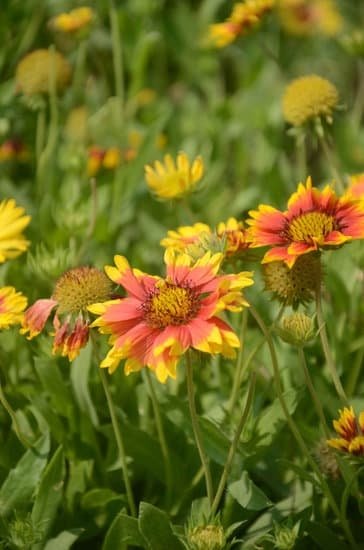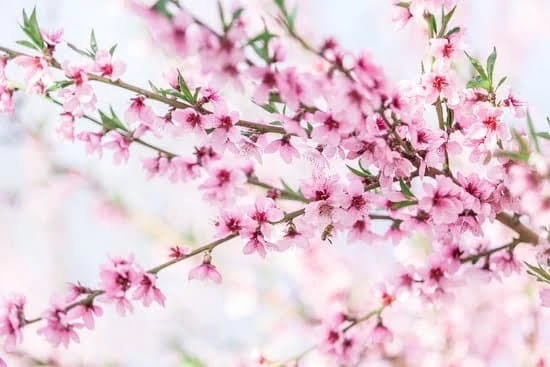Are you looking for a way to add beauty and elegance to your home? Look no further than rose gardening. In this article, we will explore the many wonderful ideas for creating a stunning and satisfying rose garden right in your own backyard. Whether you’re an experienced gardener or a beginner, there is something special about growing roses at home that can bring joy and fulfillment to your life.
The first step in creating a beautiful rose garden is selecting the perfect roses for your specific climate, soil type, and personal preferences. We’ll provide you with tips and advice on how to choose the right roses that will thrive in your home garden, ensuring long-lasting beauty and enjoyment.
Once you’ve selected your roses, the next important step is preparing the soil for planting. Properly preparing the soil with good drainage and fertilization is essential for the health and success of your roses. We’ll guide you through the detailed steps on how to do this effectively, setting the stage for healthy, thriving roses in your garden.
As we delve into this article, we’ll discover not only how to plant and care for our roses but also creative ideas for designing a visually appealing and functional rose garden. From companion planting to different garden styles, we’ll explore ways to create a beautiful landscape that showcases the elegance of these beloved flowers. Are you ready to embark on this delightful journey of rose gardening at home? Let’s get started.
Selecting the Right Roses for Your Garden
When it comes to selecting the right roses for your home garden, there are a few key factors to consider. The climate of your region plays a significant role in determining which types of roses will thrive in your garden.
It’s essential to choose varieties that are well-suited to the temperature fluctuations and precipitation levels in your area. For example, if you live in a hot and arid climate, you may want to opt for drought-resistant rose varieties, while those in cooler regions might prefer cold-hardy roses.
In addition to climate, the soil composition of your garden also impacts the success of your rose plants. Different roses thrive in different types of soil, so it’s important to assess the soil quality and acidity levels before making your selection. Roses generally prefer well-drained soil with a slightly acidic pH level, so amending the soil with organic matter or fertilizer may be necessary to create an ideal environment for rose gardening.
Personal preference also plays a significant role in choosing the perfect roses for your home garden. Whether you’re drawn to the classic beauty of hybrid tea roses, the low-maintenance nature of shrub roses, or the vibrant colors of floribunda roses, there are countless varieties to choose from. Consider factors such as bloom size, fragrance, and growth habit as you select roses that align with your aesthetic preferences and gardening goals.
Ultimately, taking into account climate suitability, soil compatibility, and personal preference will help ensure that you choose the perfect roses for your home garden. By carefully considering these factors and conducting thorough research on different rose varieties, you can select rose plants that are best suited for thriving in your specific growing conditions.
Preparing the Soil for Planting
Before planting roses in your home garden, it is crucial to prepare the soil properly to provide the best growing conditions for these beautiful flowers. The first step in preparing the soil is to test its drainage and composition.
Roses thrive in well-draining soil, so it’s essential to ensure that water does not pool around the roots, as this can cause root rot. Sandy loam or loamy soil types are ideal for growing roses, but if your soil is heavy or clay-like, you may need to amend it with organic matter such as compost or well-rotted manure.
Once you have assessed and amended the drainage of your soil, it’s time to address its fertility. Roses are heavy feeders and require nutrient-rich soil to grow vigorously and produce an abundance of blooms. Before planting, incorporate a balanced fertilizer into the soil according to package instructions. Additionally, adding a slow-release fertilizer will provide a steady supply of nutrients over time as your roses grow.
In addition to testing drainage and fertility, consider the pH level of your soil. Roses prefer slightly acidic soil with a pH between 6.0 and 6.5. You can test the pH of your soil using a simple kit available at most garden centers. If needed, you can adjust the pH by adding amendments such as sulfur for lowering pH or lime for raising pH level.
It’s important to note that different rose varieties may have specific soil requirements, so be sure to research the needs of the roses you plan to plant before preparing their bed. By taking these steps to assess and improve your soil prior to planting, you will create an optimal environment for your roses to flourish.
| Soil Preparation Steps | Description |
|---|---|
| Test Soil Drainage | Check if water pools around roots; amend heavy or clay-like soil with organic matter. |
| Incorporate Fertilizer | Add balanced fertilizer according to package instructions; consider slow-release fertilizer. |
| Adjust Soil pH | Test pH level with a kit; add amendments such as sulfur or lime based on results. |
Planting and Caring for Roses
Once you have selected the perfect roses for your home garden, it’s important to know how to properly plant and care for them to ensure their growth and beauty. When planting roses, it’s essential to choose a location that receives at least 6 hours of sunlight a day and offers good air circulation.
Before planting, make sure you dig a hole deep enough to accommodate the rose’s roots and loosen the soil at the bottom of the hole.
After planting your roses, proper watering is crucial for their health and development. It’s best to water deeply but infrequently to encourage deep root growth. Generally, roses should be watered at least once a week, but this may vary depending on climate and soil conditions. In addition, mulching around the base of the plants can help retain moisture in the soil and reduce weed growth.
Pruning is another important aspect of rose gardening. Regular pruning helps maintain the shape of the plant, encourages new growth, and removes dead or diseased wood. It is best to prune your roses in late winter or early spring before new growth emerges.
Additionally, protecting your roses from pests and diseases is vital for their well-being. Consider using organic pest control methods and regularly inspect your plants for signs of pests or disease so that any issues can be addressed promptly.
Incorporating these steps into your rose gardening routine will help ensure that your roses thrive in your home garden. With proper planting, watering, pruning, and protection from pests and diseases, you can enjoy beautiful and healthy roses throughout the growing season.
Designing Your Rose Garden
When it comes to creating a visually appealing and functional rose garden at home, there are several creative ideas to consider. One popular concept is companion planting, which involves strategically planting other types of flowers, herbs, or vegetables alongside roses to benefit each other.
For example, planting lavender near roses can help repel aphids and other pests, while marigolds can attract beneficial insects that prey on harmful pests. This not only adds visual interest to the garden but also provides natural pest control and enhances the overall health of the roses.
In addition to companion planting, incorporating different garden styles can elevate the beauty of a rose garden. For a traditional and formal look, consider a symmetrical design with well-defined borders and geometric shapes.
On the other hand, for a more informal and natural style, opt for curved beds with mixed plantings that mimic the look of an English cottage garden. Whichever style you choose, make sure to take into account factors such as sunlight exposure, drainage patterns, and existing landscaping features to create a cohesive and harmonious design.
Another idea for designing a visually appealing rose garden is to incorporate hardscaping elements such as trellises, arches, or pathways. These not only provide structural support for climbing roses but also add architectural interest to the garden. Consider using materials like wood, metal, or stone that complement the overall aesthetic of your home and garden space.
Overall, when designing your rose garden at home, remember to unleash your creativity and personalize the space according to your preferences. Whether it’s through companion planting, different garden styles, or hardscaping elements, there are endless opportunities to transform your rose garden into a stunning oasis filled with beauty and functionality.
Rose Garden Maintenance
Once you have successfully planted your roses and they begin to flourish, it is essential to prioritize ongoing maintenance to ensure healthy and thriving plants. One of the most crucial tasks for maintaining your rose garden is mulching. Mulch helps retain soil moisture, suppresses weeds, and regulates soil temperature. When applying mulch to your rose garden, be sure to spread it evenly around the base of the plants, leaving a few inches of space around the stems to prevent rot.
In addition to mulching, fertilizing your roses is another critical aspect of maintenance. Proper fertilization provides essential nutrients that promote healthy growth and beautiful blooms. There are various types of rose fertilizers available, including granular, liquid, and organic options. It is important to follow the specific instructions for each type of fertilizer and apply it at the appropriate times throughout the growing season.
Pest control is also an important part of maintaining healthy roses in your garden. Regularly inspect your plants for signs of pest infestation, such as aphids or spider mites, and take appropriate measures to address the issue. This may include natural remedies like insecticidal soap or introducing beneficial insects to combat harmful pests. By staying vigilant and addressing potential pest problems promptly, you can protect your roses from damage and ensure their continued health and vitality.
By incorporating these maintenance tasks into your rose gardening routine, you can enjoy a stunning display of vibrant blooms season after season. It’s all about ensuring that your roses have everything they need to thrive in their environment while keeping potential issues at bay. With proper mulching, fertilizing, and pest control measures in place, you can revel in the beauty of a healthy and flourishing rose garden at home.
Showcasing Your Roses
When it comes to rose gardening ideas for home, showcasing the beauty of your roses within your living space can be just as rewarding as tending to them in the garden. Creating stunning floral arrangements with fresh cut roses can brighten up any room and add a touch of elegance to your home décor. Additionally, preserving rose petals allows you to enjoy the beauty of your roses long after they have been cut from the plant.
Here are some creative ways to showcase your beautiful roses in your home:
- Create eye-catching floral arrangements using freshly cut roses: Whether you choose to display them in a vase as a centerpiece on your dining table, or arrange them in smaller vases throughout your home, fresh cut roses add a natural and elegant touch to any space.
- Press and preserve rose petals: Preserving rose petals allows you to keep the beauty of your roses alive for an extended period of time. Whether you choose to use them for crafting, potpourri, or simply as decorative accents in glass jars or bowls, preserved rose petals bring a touch of romance and nostalgia to any room.
- Display dried rose buds: Dried rose buds can be showcased in various ways such as in decorative glass jars, hung on a string as wall decor, or used in potpourri sachets. Their delicate appearance adds a touch of vintage charm to any interior.
By incorporating these ideas into your home decor, you can showcase the natural beauty and fragrance of your roses all year round. Whether enjoying the radiant colors of fresh blossoms or basking in the timeless appeal of preserved petals and dried blooms, displaying your roses at home is a wonderful way to appreciate their splendor beyond the garden.
Troubleshooting Common Rose Gardening Issues
In conclusion, cultivating a beautiful and thriving rose garden at home can be a rewarding and fulfilling experience. By following the tips provided in this article, you can create an enchanting outdoor space that showcases the beauty of roses while enjoying the satisfaction of gardening. From selecting the right roses for your specific climate and soil to designing a visually appealing rose garden, there are many creative opportunities to explore when it comes to rose gardening ideas for home.
One key aspect of successfully growing roses at home is understanding how to troubleshoot common issues that may arise. Whether it’s dealing with wilting, discoloration, or pest infestations, being able to identify and address these problems is essential for maintaining healthy and vibrant roses. By implementing the advice provided in this section, you can effectively tackle any challenges that may come up while tending to your rose garden.
Additionally, showcasing your beautiful roses in your home can bring joy and inspiration into your living space. Whether it’s creating stunning floral arrangements or preserving the petals as decorative accents, there are countless ways to incorporate the beauty of your roses into your home decor. Overall, with a combination of thoughtful planning, diligent care, and creativity, you can cultivate a stunning rose garden that brings joy and beauty to both your indoor and outdoor spaces.
Frequently Asked Questions
What Is the Best Way to Grow Roses at Home?
The best way to grow roses at home is to start by choosing the right variety for your climate and soil. Make sure to plant them in a sunny spot, water them regularly, and prune them in late winter or early spring.
How Do You Layout a Rose Garden?
When laying out a rose garden, consider the size and shape of the area, as well as the colors and scents you want to feature. Group roses with similar needs together and provide enough space for air circulation.
Which Rose Plant Is Best for Home?
The best rose plant for home gardens varies based on personal preference and environmental factors. Hybrid tea roses are popular for their large, showy blooms, while shrub roses are low-maintenance and come in a wide range of colors. It’s important to choose a variety that suits your specific needs and tastes.

Welcome to my gardening blog! I am passionate about plants and enjoy sharing my knowledge and experiences with others. In this blog, I will write about everything related to gardening, from tips on how to get started to updates on my own garden projects.





